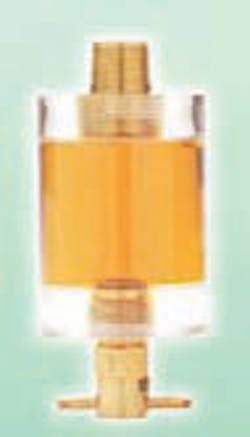Oil sight glass is available in standard and high-temperature versions to constantly and easily monitor oil condition for debris and discoloration, as well as oil level. Both come in 1 and 3 oz sizes, with 14, 38 or 12 in. NPT brass nipples. Standard glass is made of commercial grade acrylic, is rated to 225 (1 oz) and 200 psi (3 oz), and operates in temperatures from 40° to 165°F. Hightemperature glass made of heavy-walled Pyrex glass, is rated to 225 psi, and operates in temperatures to 450°F. Both feature a brass drain valve.
ESCO Products Inc.
(800) 966-5514
http://bit.ly/HP811ESCO
About the Author
Sign up for our eNewsletters
Get the latest news and updates

Leaders relevant to this article:

